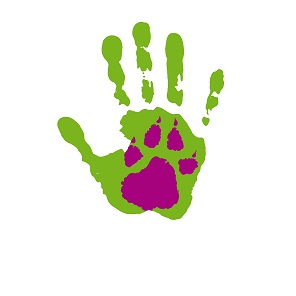Canine Emotions: Are We Creating Bad Behaviors?
I’ve discussed dog emotions in other blogs. I’d like to discuss how our reaction to dog’s emotions can cause behavior problems.
Our problem comes when we try to dismiss a dog’s emotions, stress, and fear, and put human emotions into the dog’s behavior and reactions:
· My dog chewed my shoe because he was angry that I went away
· My dog peed on the living room rug to punish me
· My dog ‘looks’ guilty so he was admitting that he did it
· My dog only attacked that dog because he loves me and was defending me
· My dog is counter surfing to get my attention
· My puppy is crying at night to try and control me. It is trying to force me to let him come sleep with us.
· My dog doesn’t like me. If he loved me he would be good. (Translate: He would behave in a manner that didn’t upset or annoy me)
I could list dozens of other statements I’ve heard from pet owners. The problem is, none of them are true. In 99% of the cases I was able to show the people that they were misreading their dog’s emotions, in fact, in a lot of cases the people learned that the dog was trying to communicate with them. It was trying to say ‘I’m stressed/afraid’ or ‘I have a need’ and the people were not focusing on the dog’s needs, but their own.
Then there is a second group of pet parents who don’t want to admit to their dog’s needs because it means they will need to change their lifestyle to suit the dog. We see this when people want to own a high drive, working dog, but they want the dog to act like a labradoodle, or couch potatoes. They are often angry when they learn that their dog ‘needs’ 2 hours a day of engaged contact with their owner.
Problem #1: We Ignore Dogs
The foundation of most behavior problems is that people want a dog, but they don’t want to take care of a dog. They want it to disappear until they want to fulfill their ‘need’ (emotional need) to care for the dog. Then, when they are done, the dog is to disappear again.
This sends conflicting messages to the dog, which mess with the dog’s emotions. It increases stress and anxiety levels. The dog’s needs are not being met. When the dog’s needs are being met the dog is happy, but, without warning, the dog is ‘ignored.’ If the dog doesn’t accept being ignored
Problem #2: Excuses
Instead of seeking help we often make excuse for our dogs. We dismiss aggression because our dog was protecting us. We dismiss mild barking because the dog was alerting us. We dismiss most behaviors in a dog until they start to annoy us.
We do not see the behavior as a behavior problem, until it annoys us. I constantly see people come in for puppy classes who have tolerated puppy biting until 7 months old when the puppy started to hurt them.
Jumping up is another behavior that can escalate, but is ignored until the puppy is bigger and starts to hurt them. This is paired with greeting them at the door. An 11 week old puppy pulls on all our heart-strings when it rushes to the door to greet us at the end of a long day. But the level of jumping, excitement, and ‘bullying’ behavior is dangerous when the dog is 90lb and demanding your attention. Not because it is a bad dog, but because it is a learned behavior and an ‘expectation’ that you have taught the dog.
Remember that your dog is a dog. It is not a child. It is not capable of filling all your emotional voids. It is not an ‘empty slate’ waiting to be programmed. And, it is not a toy. It is an emotional, sentient being, with its own personality, wants, and needs. If you can remember this, then you and your dog will enjoy a long life together.
